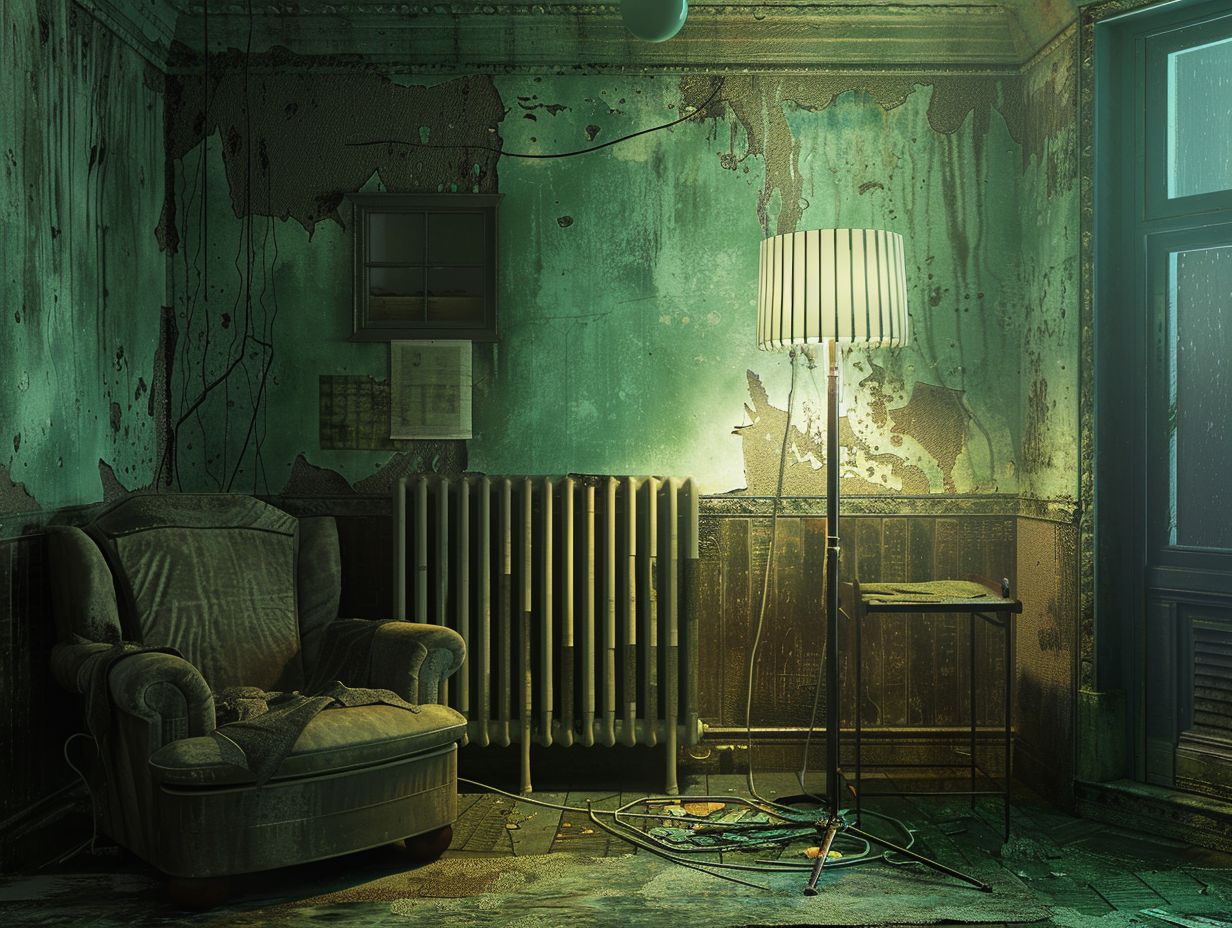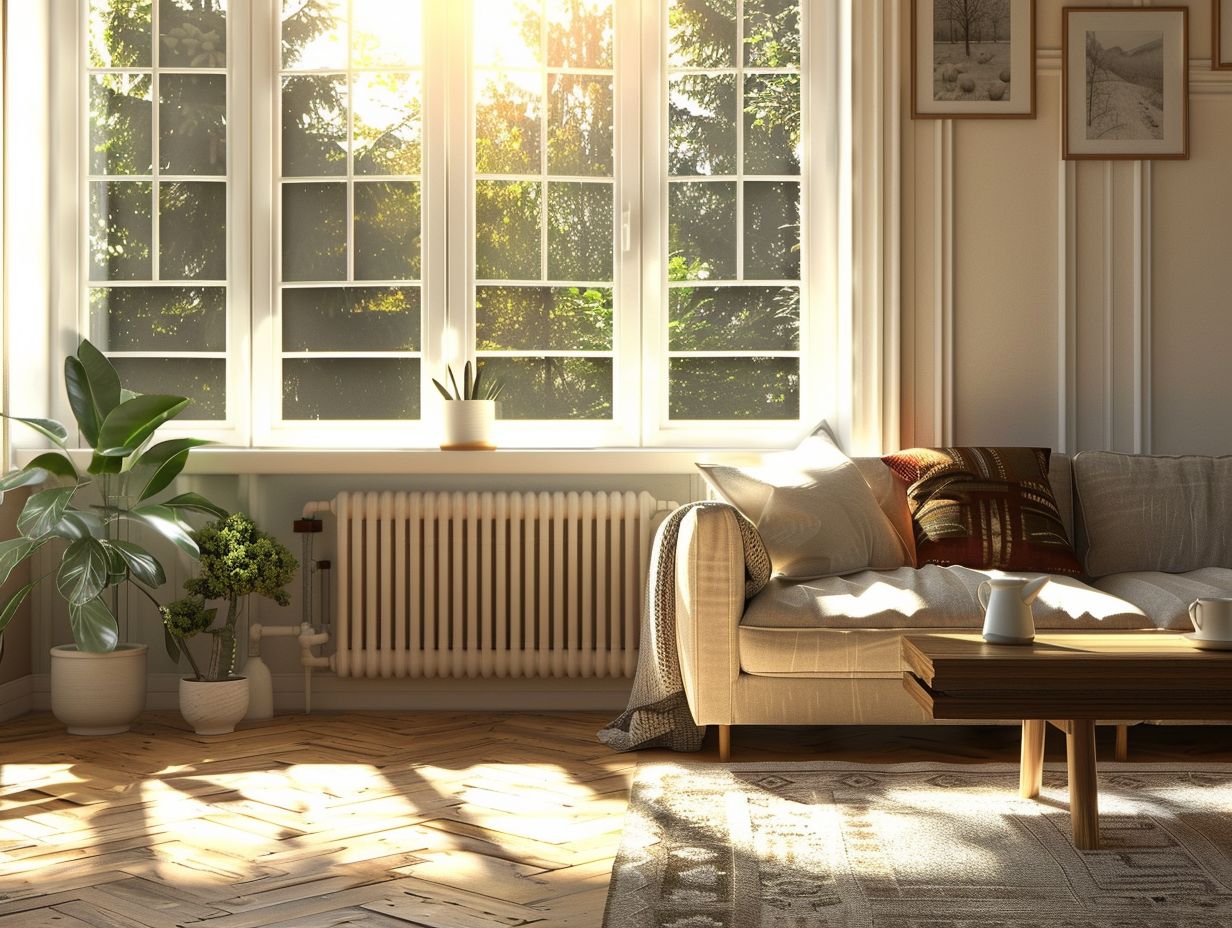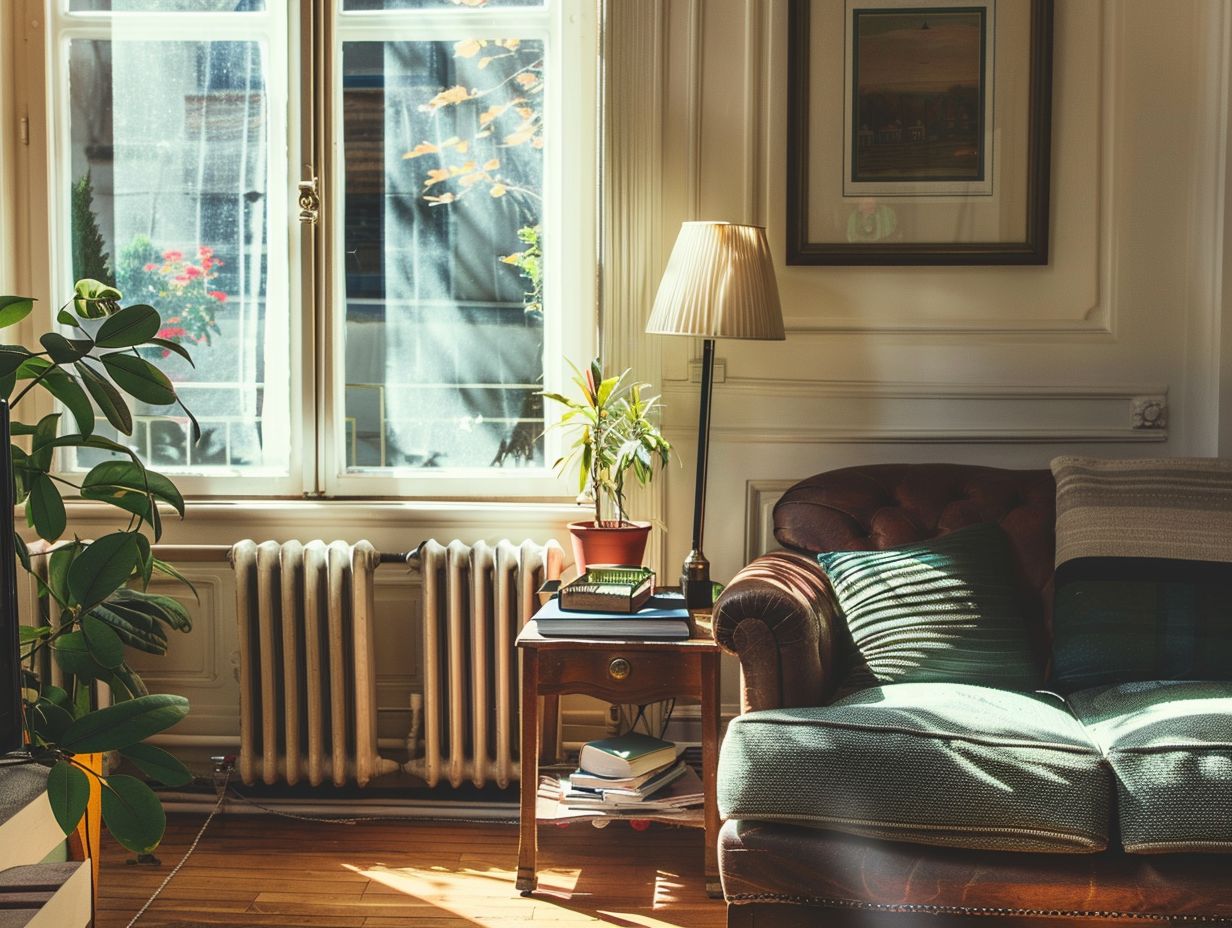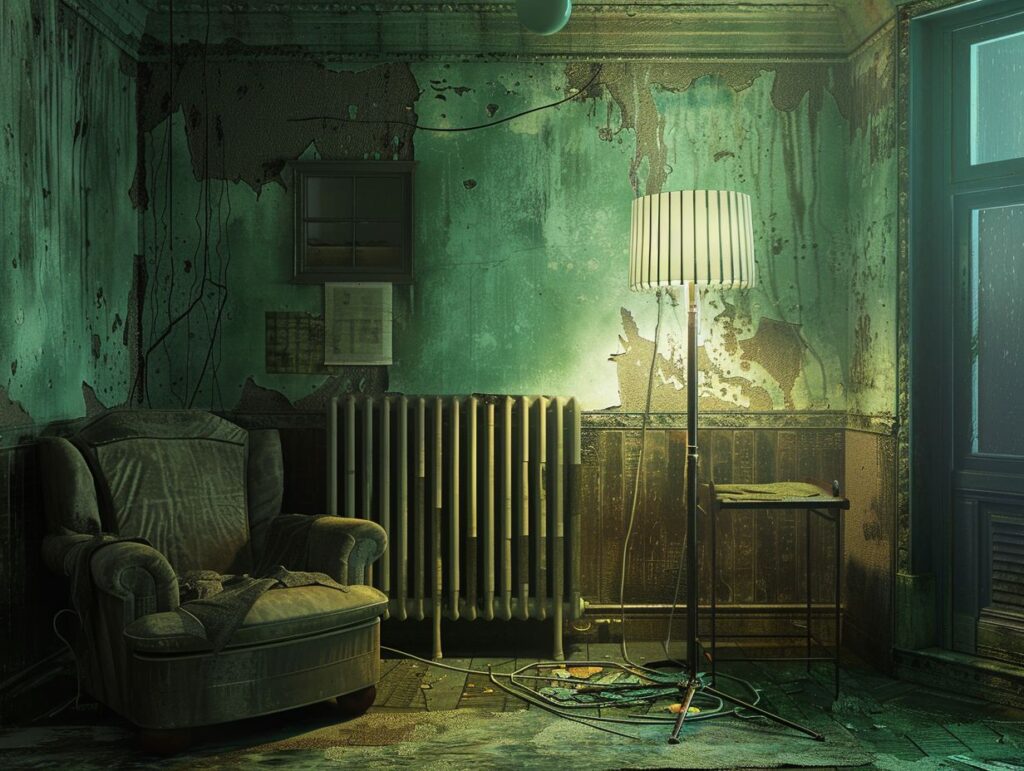Are you experiencing challenges with a radiator that is failing to heat up? It is crucial to grasp the operational principles of your radiator and the potential factors contributing to its lack of heating to effectively address the issue.
Various factors such as blocked airflow or malfunctioning thermostats could be the root cause of the problem. This article delves into the internal mechanisms of radiators, provides guidance on troubleshooting steps that you can execute at home, and outlines scenarios where seeking professional assistance may be necessary.
Do not allow a cold room to dampen your spirits. Discover the methods to restore your radiator to optimal functionality and efficiency.
Key Takeaways:

- Blocked airflow is a common culprit for non-heating radiators. Ensure proper ventilation and clear any obstructions to allow heat to circulate efficiently.
- Leaking or damaged pipes can also prevent a radiator from heating up. Regularly inspect and repair any issues to avoid further damage and discomfort.
- A malfunctioning thermostat can be the reason for a cold radiator. Test and replace as needed to maintain a comfortable temperature in your living room.
Possible Causes for a Non-Heating Radiator
When your radiator fails to heat up, there could be several underlying issues causing this problem. It is crucial to pinpoint the root cause in order to restore efficient heating in your space.
One common reason for radiators not heating properly is the presence of cold spots. Cold spots may indicate trapped air in the system, hindering the effective circulation of hot water.
Another possible cause could be malfunctioning radiator valves that are impeding the proper flow of hot water. Additionally, issues within the central heating system, such as low water levels or a faulty pump, can also result in inefficient heating.
By systematically troubleshooting these issues, you can identify and address the underlying problems, ultimately ensuring that your radiator functions optimally.
Blocked Airflow
Blocked airflow can hinder the proper heating of radiators in your system. Ensuring that air can circulate freely is crucial for efficient heat distribution. When airflow is obstructed, your radiators may struggle to effectively transfer warmth into the surrounding space. This can lead to uneven heating in different areas of a room, causing discomfort and inefficiency.
Circulation pumps play a vital role in maintaining consistent airflow by pushing heated water through the system, aiding in the distribution of warmth. By ensuring that these pumps are functioning optimally, you can enhance the overall performance of your radiator system and maximise energy efficiency.
Leaking or Damaged Pipes

Leaking or damaged pipes can result in inefficiencies within your heating system, leading to issues with water circulation and heat distribution. It is imperative that you promptly address any pipe problems.
Failure to address faulty pipes can have repercussions beyond just reduced heating efficiency. Leaks not only waste water and increase utility bills but also present a risk of structural damage due to water seepage.
The persistent presence of moisture from leaks can foster mould growth, compromising indoor air quality and potentially causing health concerns. Water damage stemming from leaky pipes may weaken the building’s structure over time, necessitating costly repairs and posing safety hazards.
This emphasises the importance of conducting regular inspections and maintenance on the entire pipe network to ensure optimal performance and prolong the heating system’s lifespan.
Malfunctioning Thermostat
A malfunctioning thermostat can disrupt the temperature regulation in your heating system, leading to inconsistent heating levels. Identifying and fixing thermostat issues is essential for optimal performance.
When your thermostat malfunctions, it can fail to signal the radiator to turn on or off at the appropriate times, resulting in rooms being either too hot or too cold. Inconsistent heating not only leads to discomfort but also negatively impacts energy efficiency, causing higher utility bills.
Troubleshooting steps for thermostat issues include checking for power supply, inspecting for debris or dust clogging the thermostat, and ensuring proper calibration. If these steps do not resolve the problem, consulting a professional technician for repairs or replacement may be necessary.
Troubleshooting Steps
When faced with radiator issues, you should follow specific troubleshooting steps to efficiently identify and address the root cause of the problem. To initiate the troubleshooting process, begin by checking for any blockages in the radiator system. This can be accomplished by inspecting the radiator for any visible debris or build-up that may obstruct the flow of coolant.
It is vital to thoroughly examine the pipes connected to the radiator to verify that there are no leaks or blockages. Subsequently, it is crucial to test the thermostat to determine if it is functioning properly and regulating the coolant temperature effectively. By methodically addressing these key areas, you can pinpoint the issue and proceed with the necessary repairs confidently.
Checking for Blockages
Blockages within your radiator system can impede the circulation of hot water, resulting in inadequate heating. It is essential to carry out regular inspections to identify and eliminate any debris to maintain optimal performance.
When blockages occur in your radiator system, they can lead to a reduction in heat output and potential operational problems. Effective maintenance procedures involve inspecting the system for signs of blockages, such as cold areas on the radiator surface or unusual sounds during operation.
Debris removal can be done using various methods, including power flushing, chemical cleaners, or flushing the system with a hose. Dealing with blockages promptly is crucial to ensure efficient heating and prevent long-term damage to the radiator system.
Inspecting Pipes and Connections
Inspect the condition of pipes and connections in your heating system to confirm that there are no leaks or damages that could obstruct the proper flow of hot water and heat distribution.
It is essential to regularly examine these components to uphold the effectiveness of your radiator and avoid possible harm to your property. In a central heating system, even a minor leak in a pipe or connection can lead to reduced heat output and higher energy usage.
By promptly dealing with any problems related to the pipes, valves, or fittings, you can prevent expensive repairs and guarantee that your radiator functions efficiently throughout the colder seasons.
Testing the Thermostat

Testing the thermostat’s accuracy and responsiveness is essential for diagnosing any issues related to temperature control and heating regulation in the system.
One way to test your thermostat is by inspecting the display to ensure it accurately reflects the temperature setting. Additionally, checking the wiring connections for loose or damaged wires can help identify potential issues. If your thermostat appears to be functioning correctly, yet the radiator is not heating properly, consider bleeding the system to release any trapped air.
Another troubleshooting measure is to examine the radiator valves and pipes for any blockages that may impede heat distribution. By following these procedures, you can effectively identify and resolve thermostat-related problems that affect radiator performance.
When to Call a Professional?
Knowing when to seek assistance from a heating engineer or professional is essential when facing complex radiator issues beyond DIY troubleshooting methods.
One key indicator that signifies the need for professional intervention in resolving radiator problems is when there is persistent leaking or unusual noises coming from the radiator system. These issues could indicate underlying structural or mechanical issues that require expert assessment.
In addition, if there is inconsistent heating throughout the building despite adjustments to the thermostat, it may be a sign of a larger problem that needs professional attention. By seeking help from a qualified professional, you can ensure that the problem is accurately diagnosed and efficiently resolved, saving you time and potential costs in the long run.
Signs of a More Serious Issue
Certain signs such as persistent airlocks or the need for a power flush indicate more serious underlying issues in your radiator system that require professional attention. Airlocks are often a symptom of trapped air within the system, leading to reduced efficiency and uneven heating.
Power flushing, on the other hand, is essential for clearing out debris and sludge buildup that can impede the proper functioning of your heating system.
Neglecting these red flags can result in reduced heat output, increased energy bills, and potential damage to your boiler. Professional intervention is crucial in diagnosing and resolving these issues effectively to ensure the optimal performance and longevity of your heating system.
Benefits of Professional Maintenance
By opting for professional maintenance services, such as power flushing to remove debris and blockages, you can significantly enhance the efficiency and longevity of your radiator system.
When you choose regular professional maintenance, you ensure that your radiator system operates at its peak performance, which can reduce energy consumption and save you money in the long run.
Power flushing is essential for eliminating any buildup of contaminants or sludge within the system, preventing potential blockages that could result in costly repairs. This proactive approach not only maintains the effectiveness of your heating system but also contributes to a healthier indoor environment by ensuring proper heat distribution throughout your home.
Frequently Asked Questions
Why Does My Living Room Radiator Not Heat Up?

There are a few potential reasons for this issue. It could be due to a problem with the thermostat, the heating system, or a blockage in the radiator itself. It’s important to diagnose and address the problem as soon as possible to ensure your home is properly heated.
What should I check if my living room radiator is not heating up?
First, check the thermostat to make sure it is set to the desired temperature. If it is set correctly, check if other radiators in your home are heating up. If they are, there may be an issue with the specific radiator. Check for any visible blockages or leaks, and make sure the valves are fully open.
Do I need to bleed my living room radiator?
Yes, bleeding your radiator is an important maintenance step that should be done regularly. Over time, air can build up in the system, causing blockages and preventing proper heating. Bleeding the radiator releases any trapped air and allows for better circulation of hot water.
Can low water pressure cause a living room radiator to not heat up?
Yes, low water pressure can affect the overall performance of your heating system, including the function of your living room radiator. If you are experiencing low water pressure, it is important to address it as soon as possible to ensure proper heating and prevent further damage to your system.
Should I call a professional if my living room radiator is not heating up?
If you have checked the thermostat, valves, and radiators and still cannot identify the issue, it may be best to call a professional to assess the problem. They will be able to diagnose and fix any issues with your heating system, ensuring your living room radiator heats up properly.
Can a faulty heating system cause my living room radiator to not heat up?
Yes, a faulty heating system can impact the performance of your living room radiator. If your heating system is not working properly, it may not be delivering enough hot water to your radiator. It’s important to have your heating system regularly maintained and repaired to prevent any issues with your radiator and overall heating system.

